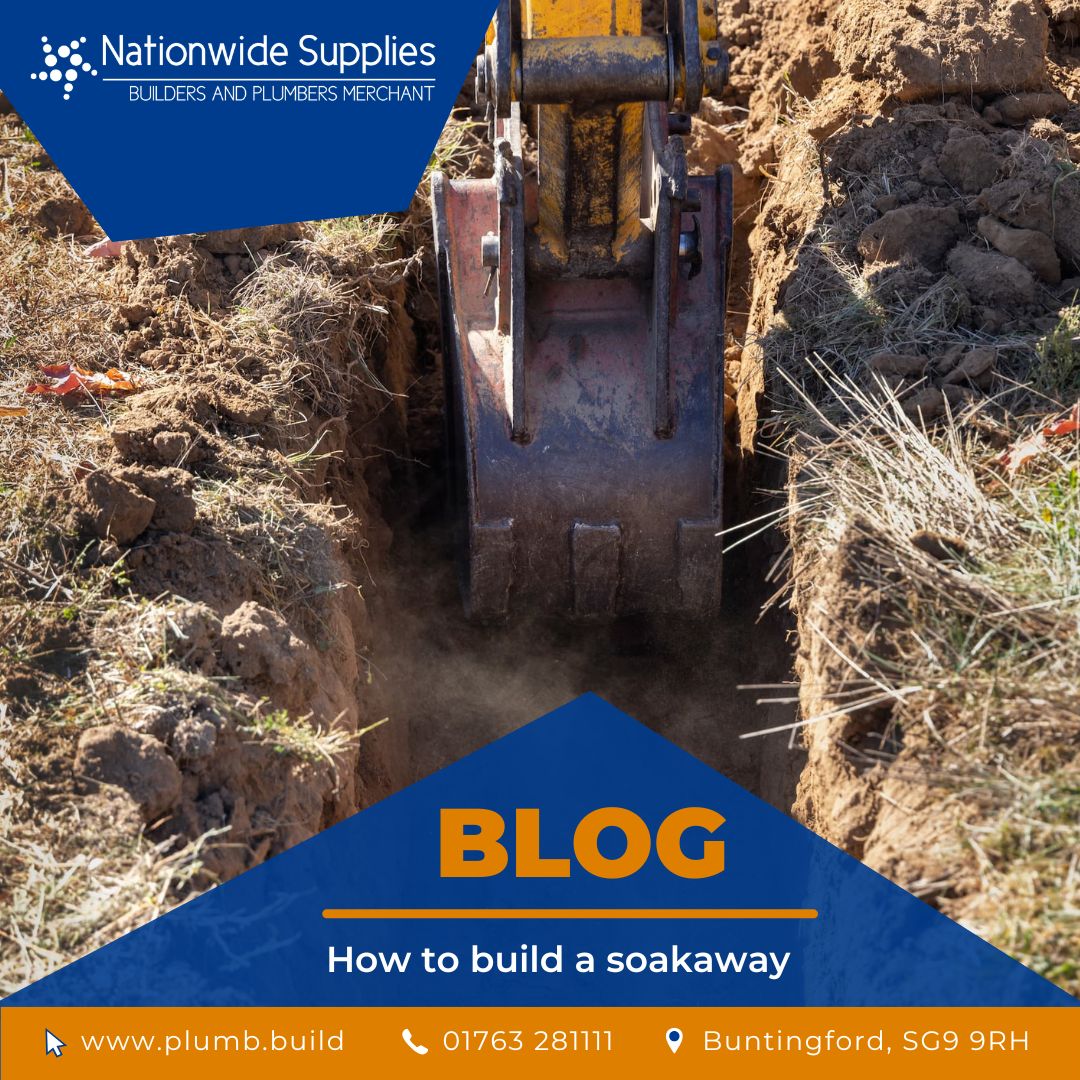Posted: 11th March 2025 | Author: Jamie Brown | Category: Drainage
Back to news
A simple drainage solution that encourages rainwater to seep into the ground rather than forming puddles on the surface, a soakaway can be a useful installation for a range of property types.
The basic idea is to dig a pit, fill it with permeable crates or aggregate that allow rainwater to seep through, and then cover it over again to reduce the visual impact. This can help to avoid waterlogging in gardens and outdoor areas, making the overall soil more suitable for planting and cultivation.
It’s important to be aware that not all gardens are suitable for soakaways. If the ground is made from a notably poorly-draining soil such as clay, then other drainage systems may be more effective. Using a soakaway with a clay-based soil could result in simply having a pit full of rainwater as it struggles to drain away.
However, soakaways are viable options for most residential areas and gardens, so they can be beneficial for many households and commercial outfits.
Below, we run through how to build a soakaway, whether you’re doing it as a DIY project on your own property, or as part of a project for a client.
The exact quantity of soakaway or attenuation crates needed for an effective soakaway will depend on the size of the drainage system you’re installing. Attenuation crates are designed to sit snugly inside the drainage pit, so the best way to make your calculations is to determine the size of the crates you’re buying, check the volume of the pit and then calculate how many crates are needed to fill it.
Of course, attenuation crates aren’t your only option. The alternative is to fill the drainage pit with MOT type 1 aggregate, which will have a similar effect of providing stability and allowing you to walk on the area without preventing drainage.
If you choose this option, the method of calculating how much you need is roughly the same. Just find out the volume of the pit and how much aggregate you get in a bag, then divide the former by the latter to know how many bags you need.
Another key material you’ll need regardless of whether you opt for attenuation crates or aggregate is geotextile sheeting. This will line the pit to ensure that soil, vegetation and debris can’t get into the drainage chamber, helping to avoid it getting clogged up and losing effectiveness.
The first step in making a soakaway is to choose an area to dig in. According to building regulations, this must be no less than 5 metres distance from any building, which may narrow down your options. If possible, choosing the lowest area of the garden will encourage rainwater to run in the direction of the soakaway for optimal drainage.
The size of the pit you dig will depend on the size of the area you want draining. The minimum size should be an area of 1m2, dug to a depth of 1.5m. This should be sufficient for a typical residential garden of 120m2, but you may need a larger pit if you’re working with a bigger area. If this is the case, you should get the advice of a drainage specialist to understand what’s needed for the specific area.
Once your pit has been dug, line it with geotextile sheeting. This should be heavy-duty landscaping fabric to reduce the risk of clogging. You’ll need enough sheeting to cover all four walls of the pit, plus the base, and have enough left over to wrap over the top of the pit once filled.
Next, place the attenuation crates or aggregate into the pit. If you’re using aggregate, fill the pit to approximately 100mm below the ground surface. Wrap the remaining geotextile sheeting over the top of the aggregate or crates, ensuring there are no gaps.
Lastly, fill in over the top of the soakaway with topsoil. Loose topsoil will settle over time, so you can overfill this area a little - in time, it will sink down to be level with the rest of the ground. After two or three weeks, you can sow grass seed or add turf above the soakaway.
If you feel confident in building a soakaway at home, you should now have a good understanding of the method required. However, we would always recommend consulting a drainage specialist to provide you with pointers on location and assess whether a soakaway is the best option for your situation - and if you’ve any doubts relating to the building process, it’s worth getting an expert in to handle it for you.
Back to news
The Author: Jamie Brown
From my early working life as a labourer, then becoming a builder and a property developer, I have been buying and using building materials for over 25 years. I set about to start a builders merchant which can offer high-quality products and significant savings along with speedy delivery to keep your sites moving. Still having a foot in the construction industry on my own property, I always make sure the products we sell are up to our high standards which is important for us to keep a great image for the company and superior reputation to supply quality!